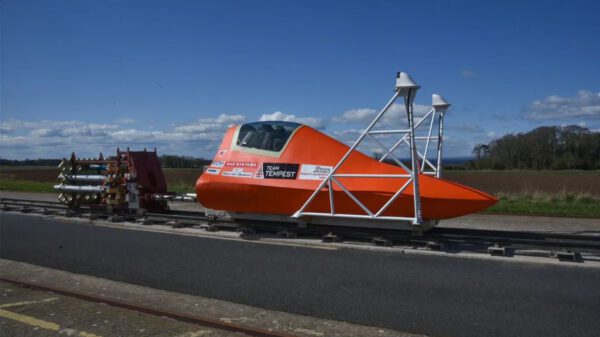Engineers from the UK’s leading combat air industry partners have released more details about work taking place to deliver the UK’s first flying combat air demonstrator for a generation.
The Flying Technology Demonstrator, first announced by the UK Government in July 2022, is set to fly within the next four years and is being designed using a range of innovative digital techniques and transformative processes, combined with the expertise of the UK’s world-class defence industry.
At a brand new facility, at BAE Systems in Warton, Lancashire, test pilots from BAE Systems, Rolls-Royce and the Royal Air Force (RAF) have already flown more than 150 hours of the demonstrator aircraft in a new bespoke simulator, providing crucial evidence to support flight trials.
In a first for military aircraft design, BAE Systems’ engineers have used auto coding to create safety-critical systems software in a matter of days rather than weeks. This enables rapid assessment of the flight control systems during more complex flight manoeuvres with the simulator capturing crucial data about how the jet will handle and perform, years before its first flight.
Engineers have also been carrying out aerodynamic engine testing, harnessing new advanced manufacturing processes to produce an engine duct which is uniquely shaped to slow the air from supersonic to sub-sonic speeds at the engine face. The intake has fewer moving parts than a traditional fighter jet design, enhancing the aircraft’s stealthy design. The test was conducted at Rolls-Royce’s site in Filton, Bristol, in the same facility where the Concorde Olympus engine was tested in the 1960s.
Working alongside UK crew escape specialist, Martin Baker, a team of BAE Systems engineers has led ejection seat trials, using a rocket-propelled sled travelling at speeds of more than 500mph. Experienced engineers have worked alongside junior team members to pass on vital skills which can be taken forward into future developments of Tempest.
This range of novel technologies will demonstrate and test key elements of the next generation combat air design as well as skills, tools, processes and techniques needed to develop Tempest, the aircraft that will be delivered through the Global Combat Air Programme, with the UK, Italy and Japan.























